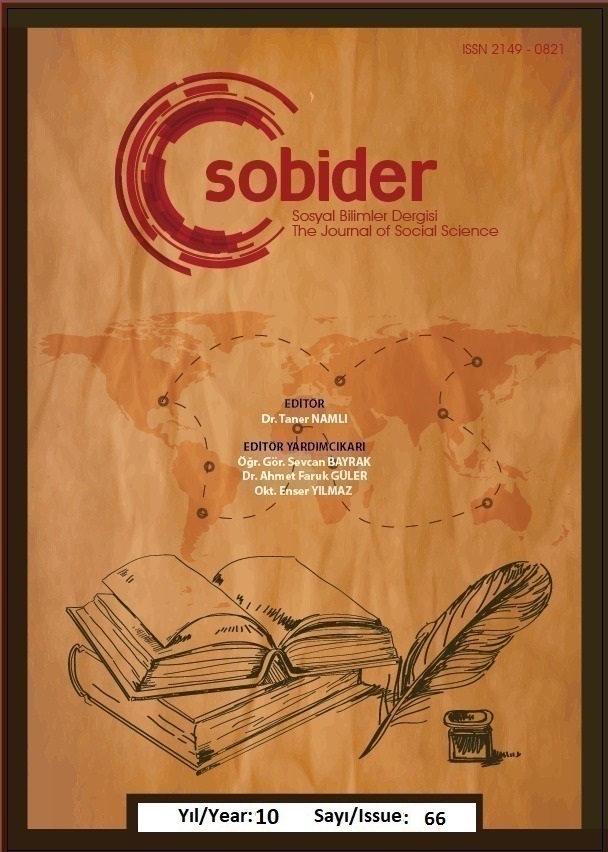Author :
Abstract
1960’larda ortaya çıkan postmodernizm çoğulculuk, belirsizlik, merkezsizlik gibi birçok özelliği içeren bireysel ve toplumsal kimliği yeniden tanımlayan bir kavramdır. Bu dönemde ortaya çıkan sanatta da yapıbozum, metinlerarasılık, parçalılık/süreksizlik, uyarlama, yeniden yazım, dönüşüm vs. gibi terimlerle hiçbir metnin öncesiz olarak ele alınamayacağı, hiçbir metnin tamamlanmış bir çalışma olamayacağı iddia edilir ki kaynak metin ile üretilen metin arasında metinlerarası ilişki yolu ile bir bağ oluşur. Oyun yazarları da anlatı dilinin veya üslubun günümüz seyircisini yakalayacak şekilde olması için postmodern dönemin sunduğu çeşitlilikten faydalanır. Bu bağlamda metinlerarası anlatım tarzını tercih eden oyun yazarları başka metinlerdeki karakterleri, olay örgüsünü vs. kendi kurgu dünyalarının dinamikleri doğrultusunda ele alarak seyirciye/okuyucuya sunar. Bu çalışmada da İngiliz yazar St. Aubyn’in Dünya Tiyatro Tarihi’nin önemli oyun yazarlarından Shakespeare’in Kral Lear adlı oyunundan yola çıkarak kaleme aldığı Dunbar adlı roman metinlerarası ilişki bağlamında incelenecektir. Shakespeare Kral Lear oyununda kendine ve gerçeklere körleşen Lear’ın hikayesini Gloucester’ın benzer hikayesiyle birlikte verirken St. Aubyn kapitalist sistemin temsilcisi olan Dunbar’ın hayatı sorgulamasını, kendiyle yüzleşmesini Shakespeare’in ayak izlerinden giderek dile getirir. Bu çalışmada metinlerarası düzlemde kaynak metin ile üretilen metnin birbirlerine yaklaştıkları ve ayrıştıkları noktalar, on altıncı yüzyıldan günümüze seslenen değerler olay örgüsü, karakter, mekân vs. gibi dramaturjik verilerle değerlendirilecektir.
Keywords
Abstract
Postmodernism, which emerged in the 1960s, is a concept that redefines individual and social identity, including many features such as pluralism, ambiguity and decentralisation. In the art that emerged in this period, with terms such as deconstruction, intertextuality, fragmentation/discontinuity, adaptation, rewriting, transformation, etc., it is claimed that no text can be handled as a priori and no text can be a completed work, so that a connection is formed between the source text and the produced text through intertextuality. Playwrights also make use of the diversity offered by the postmodern period in order to ensure that the narrative language or style captures today's audience. In this context, playwrights who prefer intertextual narrative style present the characters, plot, etc. in other texts to the audience/reader by handling them in line with the dynamics of their own fictional world. In this study, the novel Dunbar, written by the British writer St. Aubyn based on Shakespeare's play King Lear, one of the most important playwrights of World Theatre History, will be examined in the context of intertextuality. While Shakespeare presents the story of Lear, who is blinded to himself and the truth in the play King Lear, together with the similar story of Gloucester, St. Aubyn expresses the questioning of life and confrontation with himself by Dunbar, the representative of the capitalist system, by following in Shakespeare's footsteps. In this study, the points of convergence and divergence between the source text and the produced text on the intertextual plane, the values that speak from the sixteenth century to the present day will be evaluated with dramaturgical data such as plot, character, place, etc.
